OUTLOOK
Last week we asked some hard questions of the fisheries minister and this week she gave an answer. An answer that utterly disregards science, proper conservation, and common sense. We won’t go into too much detail here but if you missed our full response sent out last weekend, be sure to read that here. Matt goes over some of the regulations in the video report along with a good dose of ranting over the whole mishandling of the fishery. Jason gives a clear overview of the issues as well as an in-depth look at the regulations.
On a lighter note, we have updates on the Sea To Sky Lakes as well as the interior lakes. Matt is back with his famous Skagit River outlook where he goes into detail on what to expect opening day and Zach has a cool chironomid fly that uses a new flat wire that really helps keep down bulk on your nymph and chironomid patterns.
For those of you looking to get out to do some saltwater fishing, we have been having great chinook fishing across the straight near Thrasher and Entrance where you can practice catch and release. Locally, we have been focusing on coho and we’ve found a few off South Bowen from Roger Curtis to Cowan. Jason has more details on what we’ve been using in his report below.
As always Matt has all the details in the Video report Here:
CLASSES AND COURSES
Introduction To Fly Fishing
This course was specifically designed to give the new fly fisher the basic knowledge, casting skills and fly fishing strategies to effectively fish our local BC waters. This course is comprised of two sessions; 3hr evening seminar and a 3hr casting session.
Dates: Zoom Seminar July 21. Casting July 25
Seminar Time: 6:30pm – 9:30pm
Casting Time(s): 10am – 1pm or 1:30pm -4:30pm
Cost: $150.00+GST
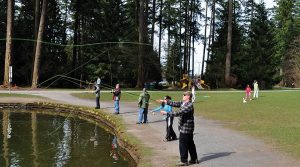
FRESHWATER FISHING REPORTS
Squamish/Whistler Lake Fishing Update
Lake fishing has continued to be good for anglers fishing in the Sea-to-Sky area. With many anglers taking advantage of eased restrictions, fish are going to start seeing more pressure. Having a variety of baits, lures, and flies will all play a critical role in success. By also having an open game plan, finding your own water is possible. There are a handful of lakes all through the corridor, giving plenty of options to those willing to explore.
Small to medium sized spoons and spinners in various colours are a necessity for the gear anglers. Floating and sitting bait has also been very successful for those taking the more relaxed approach. Dew worms, krill, single eggs, and Power Bait are all proven winners.
For flies, chironomid patterns are still relevant but, anglers shouldn’t forget about damsel and dragon nymphs at this time of year. Having a few small dries in your box is also a great idea for those twilight hatches.
Jordan Simpson
Capilano River Fishing Report
Things are right on schedule for the Capilano. There are a many fish in the river now with some better pushes coming in on the tide. We should start to see the water dropping soon to typical July levels, and with the tap turning off, we can expect the fishing to get tougher. When that happens, it will be important to go small for the presentations and to fish in low light conditions. Bait fishing becomes relatively ineffective when there is not much current so your go tos will be jigs, spoons, spinners, and flies. With this fishery, it is very common to have followers but the vast majority of them will not commit, so it is important to play around with your retrieval speed and your presentation until you nail a fish or two. This is a good time to stock up on lures and flies and we’ve got the ones you need, so come visit us and get geared up!
Skagit Outlook + Stream Fishing Predictions
As most of you know one of my favorite summer fisheries is the Skagit River trout fishery. The Skagit is debatably one of the most picturesque rivers you can reach within a day trip from Vancouver and it offers classic fly fishing opportunities. What we mean by “classic fly fishing” is that there is a healthy population of aquatic insects. This is unique because most of the rivers around the lower mainland are affected by cold glacial water, heavy runoff, or a poor chemistry that stunts aquatic insect growth. This means good salmon and steelhead habitat but poor resident trout fishing.
The Skagit is one of the exceptions and supports a healthy bug population. A good bug population in turn supports a healthy population of resident rainbow trout, cutthroat trout and bulltrout. This bug population also challenges the fly fisherman to match fly selection and techniques to the conditions and available hatching insects. This is what I consider “classic fly fishing”. It is not always easy, but when you solve the puzzle the fishing can be excellent. Other rivers like this to consider are the Birkenhead and the Thompson.
The Skagit can be accessed from both the Crowsnest highway at Sumallo Grove and then on the Silver Skagit Road, a 40 min dirt road that turns off highway 1 just before Hope.
The Skagit opens on the first of July and stays open until Oct 31st. The Skagit is a catch and release, bait banned, single barbless hook fishery. This keeps the population healthy so make sure your barbs are pinched and the fish are released gently.
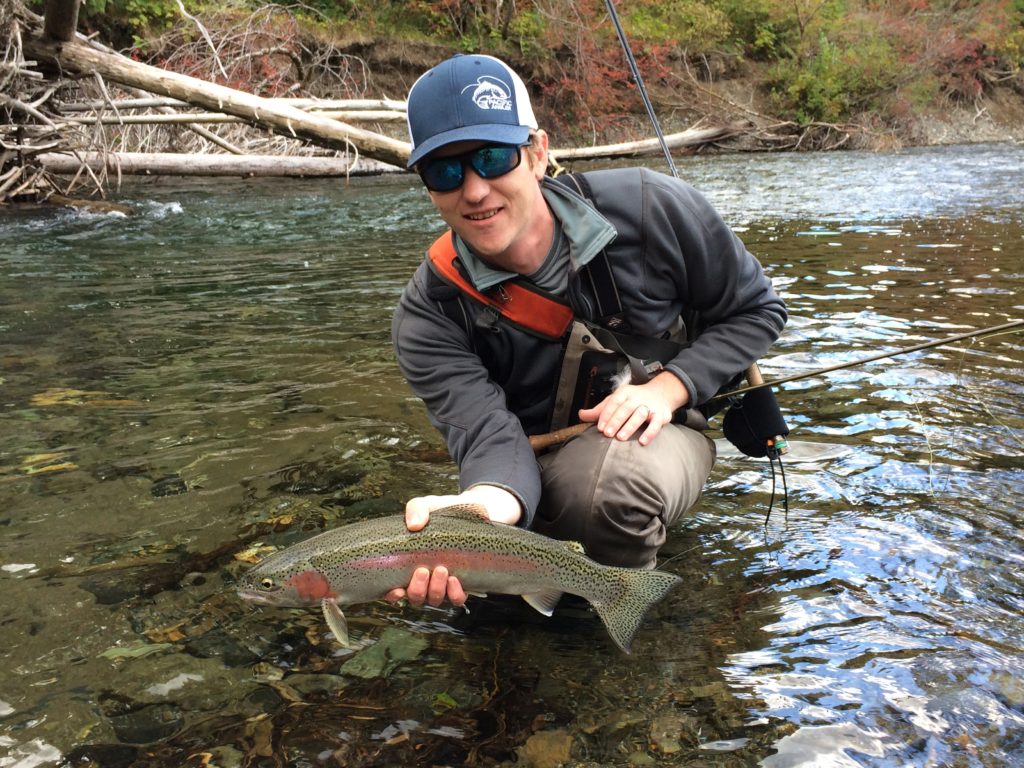
The big question for most anglers leading up to opening day is whether the river will be at a fishable level? Many rush out on opening day only to find that the water levels are too high to hike the banks effectively.
This year’s snow pack was sizeable and the amount of runoff has been hampered by a cooler than normal spring. If you spend a few hours going over graphs and reports on the water sheds around the Skagit area, focusing on the numbers, we are noticeably higher than we were at this time last year. The numbers are telling me that it will about 1.5-2ft higher than last year and much higher than (2016). In 2015, we had a super low water year and opening day was at record lows. In 2014, we had a very high water year.
This year will be a little lower than 2014 but not by much. If you remember last year, and I was there opening day, the water had good clarity, but it was a challenge to hike the river because of the height. So, this probably means challenges for opening day this year.
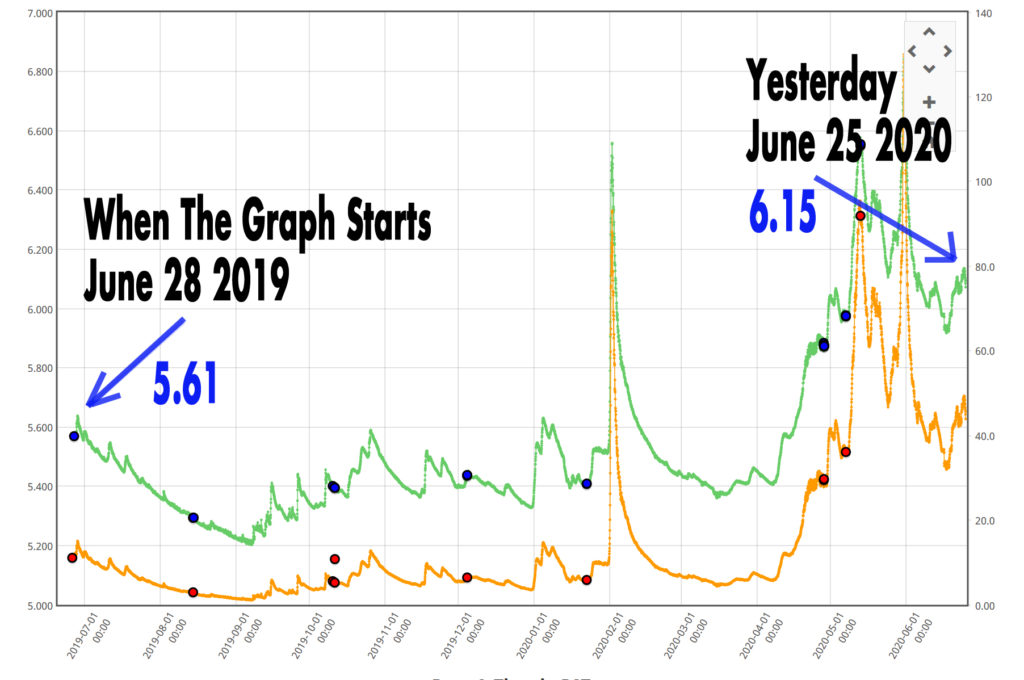
On a monitoring note, there is now a better water level gauge to run off. Before we had to run off the level at Ross Lake and it was very affected by the dam, not accurate river levels. The new graph that I am using is in the middle of the river – See link here which should help with making better predictions. See link to Graph – https://wateroffice.ec.gc.ca/report/real_time_e.html?stn=08PA012
So, if we run off the new numbers, I expect it to be a challenge for moving around/hiking the river bank and the water might have a blue color to it. Based on that, my thoughts are that if you can drift in a boat or run a boat up from Ross Lake, it should be good but if you are on foot you will need to pick your battles and expect some bush whacking.
If you want to give it a go in the first couple weeks of July, the river will consistently drop. I expect it to be good around the 20th – 30th of the month and then it will fish well until it gets cold in October. The weather will play a big role. We want heat to get that snow pack beaten down. If you are interested in this fishery, come down to the shop and talk to me or any of the other guys. We can walk you through the set ups and access points. If you are heading out next weekend, let us know how it goes. We will have more details in next week’s report as well.
Matt Sharp
STILLWATER FISHING REPORTS
Interior Lakes Fishing Report
The previous week has held some unstable weather, which led to unstable fishing. Unfortunately, the forecast looks the same, with storms rolling through the interior over this coming weekend. This may have an adverse effect on the caddis and mayfly hatches we’ve been seeing recently, so it may be time to alter your approach.
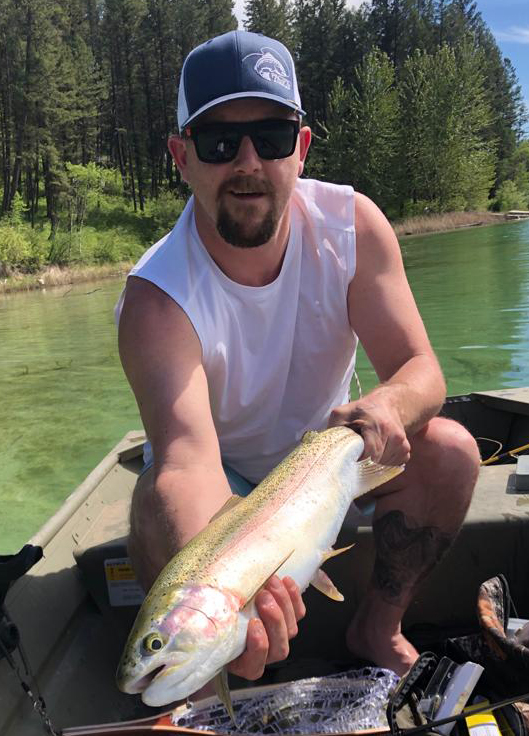
In the calms of the rain and heavy wind of last week, I managed to see some epic mayfly hatches out near Pennask lake. (4500ft) However, the fish were completely turned off of anything on the surface. The only luck I managed to have was with Balanced Leeches in 5 – 10ft of water. Whereas closer to Merritt lots of luck was had on bombers and damsel nymphs in 15-20ft with intermittent caddis hatches allowing some dry fly action.
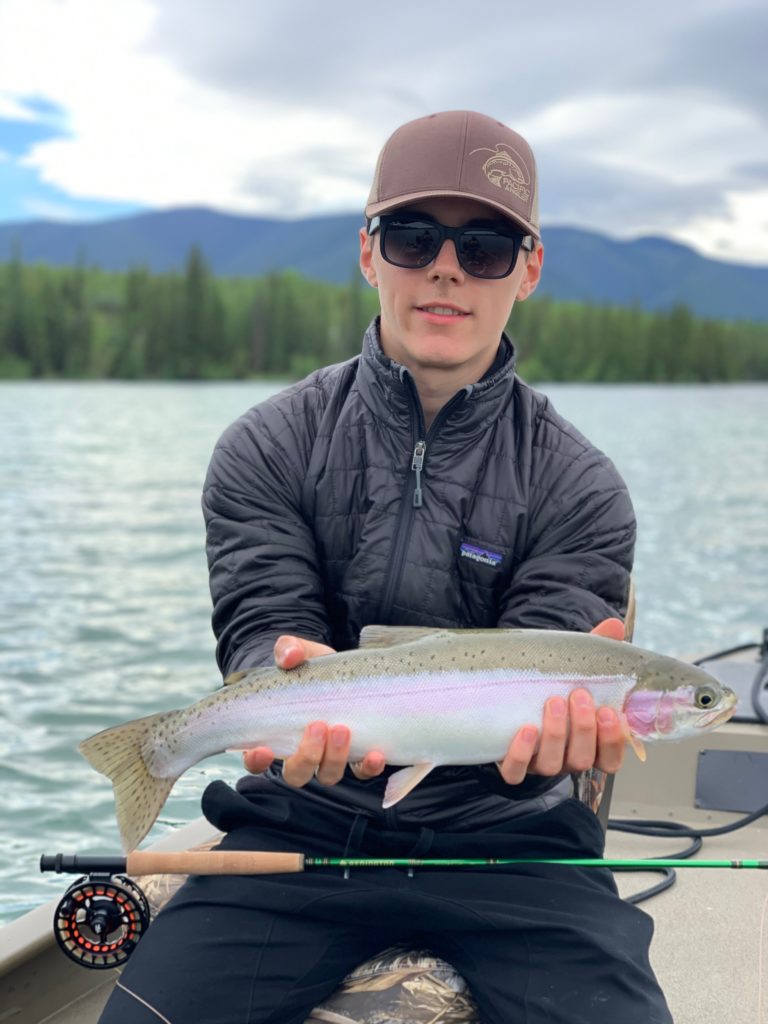
Due to the multitude of food options for these rainbows at this time, I always suggest starting your day on an attractor pattern such as nightmare or egg sucking leeches. Be sure to pump the stomach of any fish you catch as it will be imperative to finding what they are keyed in on.
Aidan Munro
Corbett Lake Trip Update
We also have and update from PA team member Mike from his trip last week up to Corbett.
For Fly Fishers Only….Corbett Lake is an easy 2-1/2 hr. scenic drive from Vancouver. This lake is restricted to rowing or the use of electric motors only. The lake is generously stocked in May with voracious Pennask Rainbows in the 2 lb. range. There is very little winter kill and the hold over can provide some very large fish lurking in the depths, just waiting for the right moment and enticement.
Over the past couple of weeks, the weather has been unsettled but, there is a warming trend. Notwithstanding, the season is later than in prior years and it is expected that one will be able to fish well into July before the trout head to the bottom as the lake temperatures increase.
The mornings are generally calm and are productive for those fishing chironomids, in the size 14-18 range. A dedicated chironomid floating indicator line is very useful so that one can easily switch from one method to another without having to take down the set-up. Leaders of 18-20 feet will reach the bottom depths off the various drop-offs. The “ticket” for a consistent strike zone seems to be in the range of 14’-15’ below the indicator just over the drop-offs. The most effective chironomid patterns have been ice cream cones with silver wrap and black or red ribbing, the copper-olive that was featured a few weeks ago on a Pacific Angler You Tube video, as well as anti-static bags.
From noon until about 4:00 pm, there is generally flat water giving the dry fly enthusiast a great opportunity to offer some Royal Coachman, Humpies, or Tom Thumbs to the surface and subsurface cruisers. One may also want to cast and retrieve Mayfly and Dragonfly nymphs toward the weed beds where there is an abundance of reeds and bull rushes. For those who want to move off anchor, drifting off the banks, in the shallows, has also proven effective for both dries and nymphs.
After 4:00 until about 7:00 pm, the N-W wind gusts settle in and this offers the opportunity to troll olive, black, and maroon micro leeches and pumpkin heads on sinking lines. Casting and retrieving these patterns on sinking lines have also been effective. If these methods don’t elicit a strike, try casting and retrieving a sunrise booby fly. Be sure to let the fly rise and settle back down again before the next stripping sequence. Often, when the fly is settling back down after a couple of strips, this is the moment when a fish makes the take.
From 7:00 pm onward to twilight the lake settles down and just about any of the aforementioned methods and flies will work until your arm gets tired and you call it another fantastic day of fishing.
Tight Lines!
Mike Kliman
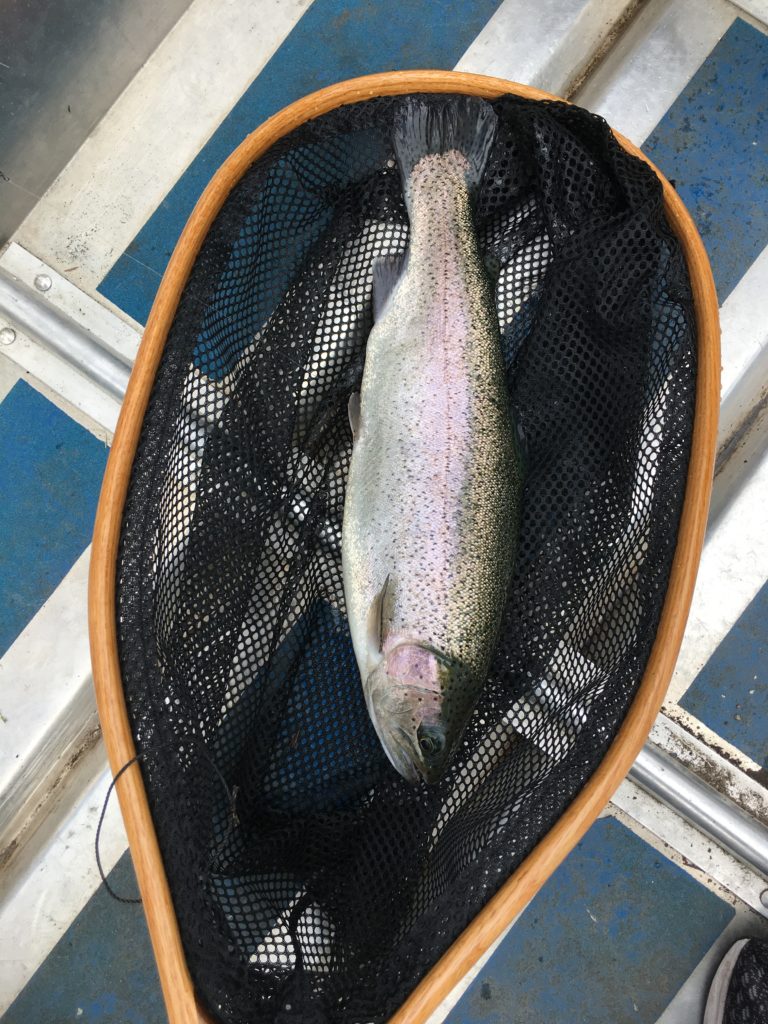
FLY FEATURE
Limey Chironomid
The Limey is a chironomid that you don’t see too often. That being said they do show up often enough that you will definitely want some in your arsenal. This pattern was deadly for me when I was last out in the Kane Valley about 2 weeks ago. The fishing was tough and the first fish I caught had a tiny size 20 Lime Green Chironomid in it so I obviously dialled in the colour with the smallest one that I could find and fishing started to pick up. The Flat Wire used in this pattern is pretty cool. It’s a lot tougher than flashabou and adds a good amount of flash to the pattern, but not too much. Make sure to tie up some of this easy pattern as you won’t want to be caught without it!
Materials List:
Hook: Curved Nymph Size 12-20
Bead: 5/64″ Copper or Brown
Thread: Watery Olive or Fl. Chartreuse 70 Denier
Rib: Sybai Flat Wire Ultrafine Wide Silver, Copper Small Ultra Wire
Coating: Brush-on Zap-A-Gap
Check out the video here:
Zach Copland
SALTWATER FISHING REPORTS
First off, I want to thank everyone for all the emails and texts I received regarding last weekend’s special report on the 2020 Chinook Measures. Never have we received so many emails and so much positive feedback. So, thank you.
I would also like to report we, and by that I mean you and I, are starting to make a difference. DFO called me and some FN have also reached out to me. They weren’t too happy about what I had to say. I was happy to have a constructive talk with both parties. I explained to them although I respect FN priority access to stocks, I do have a problem with a management regime that closes one user group down when their area specific impact is less than 1% and then allow gill net openings in the Fraser for the very fish that are being protected. I do have a problem with the fact we have not transitioned to mass marking and that we can’t retain abundant hatchery fish in a fishery where stocks of concern are present less than 1% of the time. I do have a problem with closing one group down and re-allocating those stocks to another group, calling it a science-based decision. I do have a problem with these kind of drastic measures coming out in late June without having been discussed at the SFAB level in previous meetings.
So, keep the letters coming, they are having an impact! If you haven’t done so already, read my article from the weekend and send an email to those people listed at the bottom of the article. Make sure you join the Public Fishery Alliance; there are further actions, such as protests in the works, so please join them as we need numbers to participate and to follow on social media.
As far as fishing goes, it should be no surprise that there are lots of chinook around. As per the last few years, the chinook fishing now has been awesome around Vancouver for stocks of non-concern. Hence, our frustration with these closures. We have been over to Thrasher and Entrance and the fishing for chinook has been excellent and you can practice C&R in these waters. This area opens up July 15 for 1 chinook a day between 62-80 cm. We have been doing well on Salty Dawg and chartreuse Herring Aid flashers with green or chartreuse splatter back hootchies, at 140-240 ft. on the riggers.
Locally we have been focusing on coho due to the no fishing for chinook regulations. We have found some coho off South Bowen from Roger Curtis to Cowan. Look for the tide lines and current lines. The fish are generally shallow and productive depths are 25-75 on the riggers. UV flashers like Green Haze and Purple Haze are good and the Betsy is always a good choice. White UV hootchies are usually the top producer on a short leader, 28 inches or so. We have also heard reports of some coho being caught off Point Atkinson. There are plenty of fish in the Cap already, so if you want to stick closer to home, you could try the West Van shoreline or even the Cap Mouth on the flood.
It’s official, crabbing has been good this year and it will go down as a good season. We are dropping traps on all of our trips and have had good results.
So, let’s keep the pressure up on DFO; if we don’t, we won’t see summer chinook fishing in Vancouver ever again. In the meantime, get out there for some coho or head across to the Gulf Islands for some chinook.
See you in the shop, on the water, or at a protest,
Jason Tonelli


